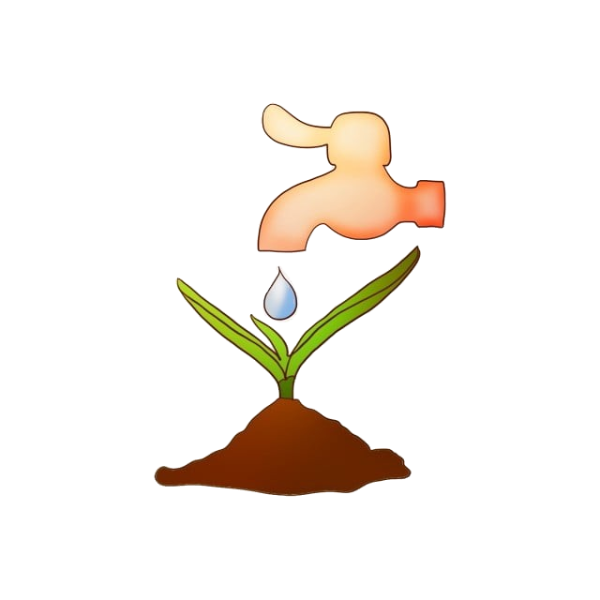Abstract
Metal–organic frameworks (MOFs) are an emerging class of crystalline, porous materials with tunable chemistry and exceptionally high surface area, offering new possibilities for soil moisture conservation. Their capacity to adsorb and desorb water enables MOFs to act as microscopic water reservoirs, storing moisture during humid conditions and releasing it gradually as the soil dries. MOFs can also influence capillary and vapor exchange processes, reducing evapotranspiration and stabilizing root-zone moisture. When combined with hydrogels, polymers, or biochar, MOF-based composites enhance water retention and allow controlled release of water and nutrients, improving irrigation efficiency and nutrient use. Additional benefits include improved soil porosity and reduced nutrient leaching. However, challenges such as hydrolytic instability, potential metal ion leaching, high synthesis cost, and ecological uncertainties must be addressed before large-scale agricultural use. Research should focus on water-stable, low-cost MOFs (especially Zr-, Fe-, or Al-based) and their integration with natural carriers like biochar for sustainable deployment. Laboratory and field evaluations on water retention, crop growth, and soil health are essential to validate their effectiveness. Overall, MOFs hold significant promise for enhancing soil moisture conservation and agricultural sustainability through engineered water management at the micro-scale.
Keywords Metal–organic frameworks (MOFs) • Soil moisture conservation • Water adsorption and release • MOF–composites (hydrogel/biochar) • Sustainable agriculture
Thought for 7s Great question — MOFs (metal–organic frameworks) are an exciting, fast-growing material class and they show several promising ways to help conserve soil moisture. Below Here is a summary on how they work, practical uses, benefits, limitations, and sensible next steps if you’re thinking about research or application.
MOFs are crystalline materials made from metal nodes coordinated to organic linkers, producing highly porous, high-surface-area structures. That porosity and tunable chemistry is what makes them interesting for water-related soil applications.
*Mechanisms by which MOFs can help soil moisture conservation* *High-capacity water adsorption / desorption*
Many MOFs strongly adsorb water into their pores at specific relative humidities. In soil this can act like microscopic water reservoirs that hold water when abundant and slowly release it as soil dries.
*Capillary and vapour-buffering effects*
MOF pores and interconnected structures can change local capillarity and vapour exchange, slowing evapotranspiration at the micro-scale and buffering moisture fluctuations around roots.
Composite formation with hydrogels or biochar
Embedding MOFs into hydrogels, polymer matrices, or coating porous carriers (e.g., biochar) combines MOF adsorption with the swelling/retention of hydrogels — synergistic water-holding.
*Controlled release of water and agrochemicals*
MOFs can be loaded with water and/or nutrients and engineered to release them slowly. This reduces the need for frequent irrigation and reduces nutrient leaching.
Improving soil structure / porosity when used as amendment
Fine MOF particles or MOF-coated carriers may alter soil pore size distribution and aggregate stability, sometimes improving the soil’s ability to retain plant-available water.
Potential benefits for agriculture / arid soilsIncreased plant-available water between irrigations (longer intervals).
Reduced irrigation frequency and water use.
Lower nutrient leaching if combined with nutrient-loaded MOFs.
Possibility of integrating multiple functions (water retention + slow-release fertilizer + pollutant adsorption).
Practical forms of applicationMOF–hydrogel composites mixed into potting media or topsoil.
MOF-coated biochar/granules that are blended into soil (easier to handle).
Seed coatings or root zone pellets that release water near seeds/roots.
In situ synthesis on carriers (growing MOF on a cheap porous substrate) to reduce cost and improve handling.
*Limitations, risks and real-world challenges* Stability in soil environment: Some MOFs hydrolyze or degrade in the presence of water, pH extremes, or ions. Choosing water-stable MOFs is critical.
*Metal leaching / toxicity risk:* MOFs contain metal ions (Fe, Zr, Al, Cr, Cu, etc.). If unstable, metals could leach and harm soil biota or plants. Risk depends on metal, stability, soil chemistry.
*Cost and scalability:* High-quality MOFs can be expensive to synthesize at scale; practical solutions often use cheaper carriers/composites.
*Regulatory & ecological unknowns:* Long-term impacts on soil microbiome, accumulation, and food-safety issues need careful evaluation.
Particle handling and dispersion: Very fine powders may be difficult to apply uniformly; granulation or embedding into carriers helps.
What to test / measure (if you’re doing experiments)Water retention curve (soil moisture vs matric potential) to see change in field capacity and wilting point.
Plant-available water (PAW) between field capacity and wilting point.
Evapotranspiration / pot weight loss under controlled drying cycles.
Crop growth metrics: biomass, yield, water use efficiency.
Leaching tests for metals and nutrients (soil columns).
MOF stability: measure structure and metal release over time (XRD, leachate analysis).
Soil microbiome assays if possible (to detect ecological impacts).
*Examples of MOF choices (general guidance):* Choose water-stable MOFs (Zr-based frameworks are often cited as relatively stable in water; some Al- and Fe-based MOFs are also more robust).
Prefer MOFs grown on cheap, porous supports (biochar, sand, polymer beads) for field use to reduce cost and reduce risk of fine-particle escape.
Here, broad categories of MOF (Zr-, Fe-, Al-based) are mentioned because water stability and toxicity differ by exact framework and synthesis — always verify stability for the specific MOF and soil conditions before field use.
Environmental & safety adviceStart with lab and pot trials, then contained field plots; monitor metal mobility and soil biology.
Use immobilized/encapsulated forms (granules, composites) rather than free nanopowders to minimize airborne dust and uncontrolled spread.
Compare benefits against costs and existing alternatives (hydrogels, biochar, organic amendments), since many cheaper options already improve moisture retention.
Research / development directions worth pursuingLow-cost MOF synthesis routes and MOF-on-biochar hybrids.
MOF–hydrogel composites optimized for agricultural pH and ionic strength.
Life-cycle and ecotoxicology studies for long-term safety.
Field trials in different soil textures (sandy vs loamy) to quantify real water savings.
In short:MOFs are promising materials for improving soil moisture buffering because of their tunable, high-surface-area pores and capacity for controlled adsorption/release. However, translation from lab to field requires careful choice of water-stable frameworks, cost-effective carriers or composites, and rigorous safety testing for metal leaching and ecological impacts.
